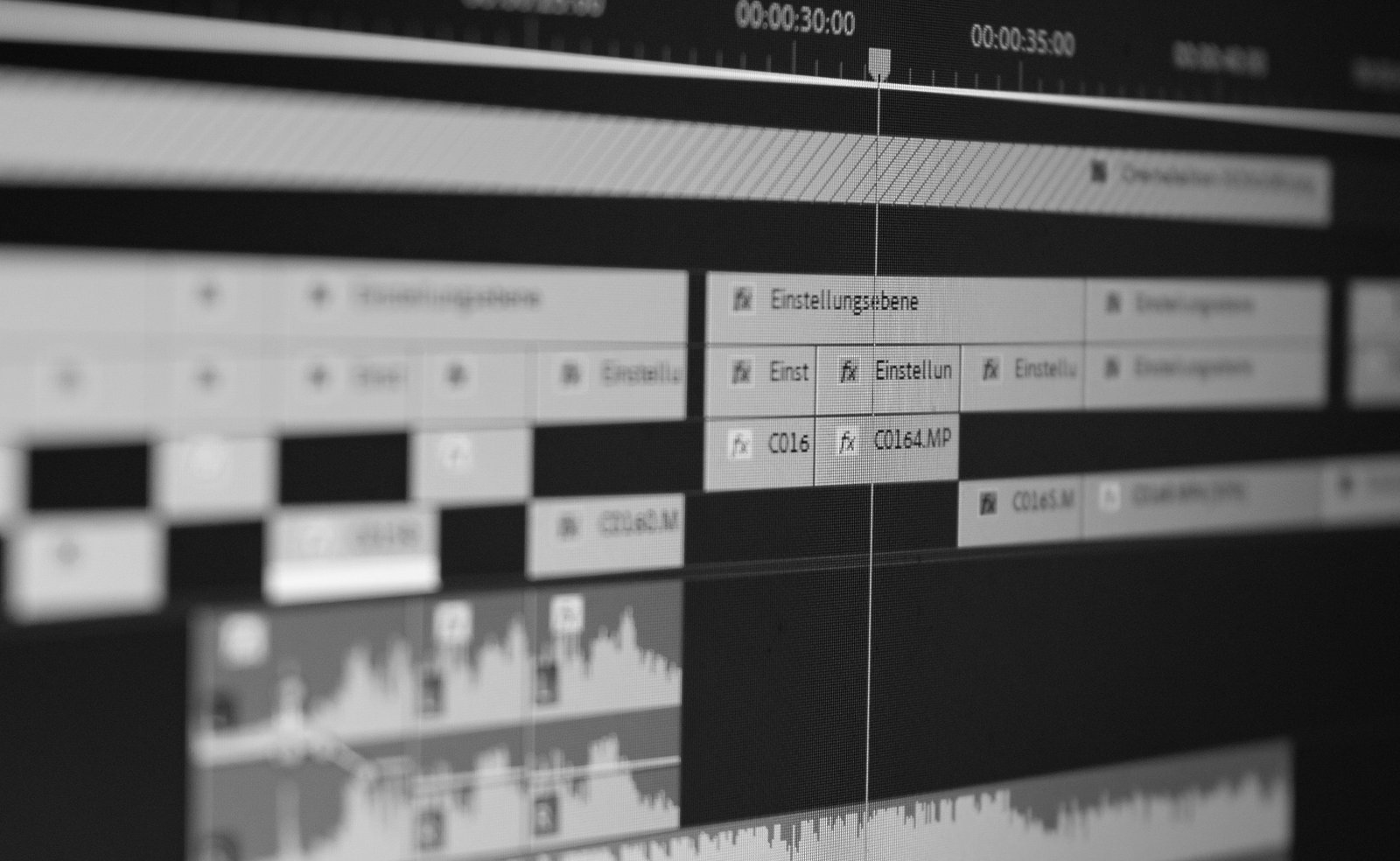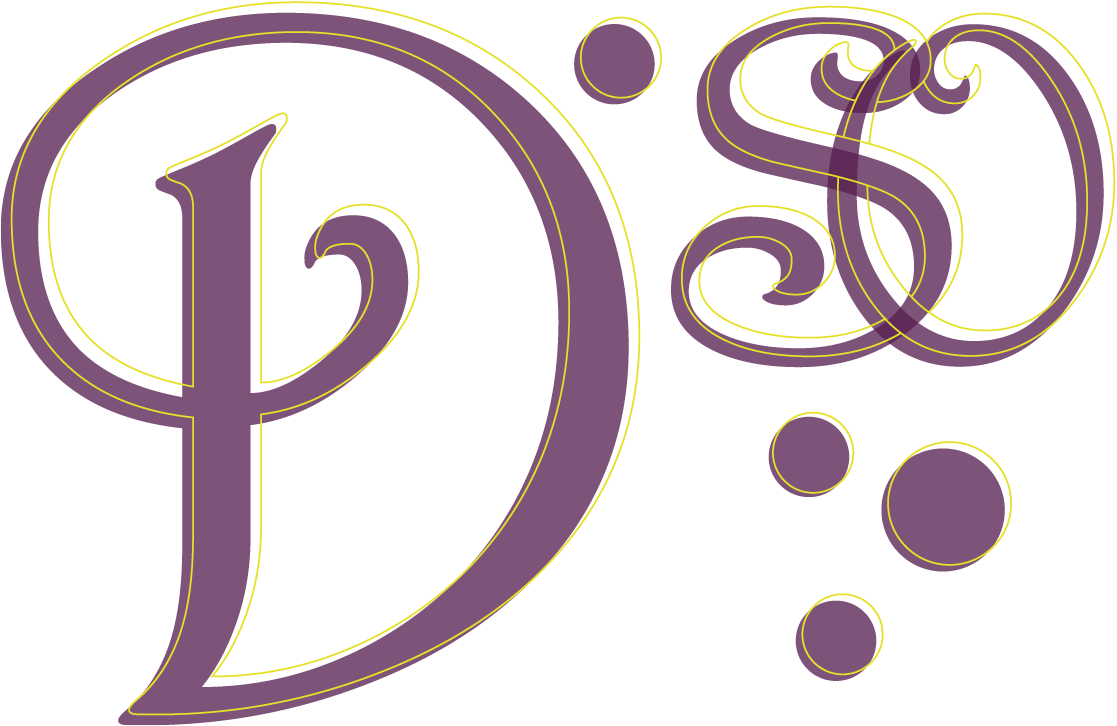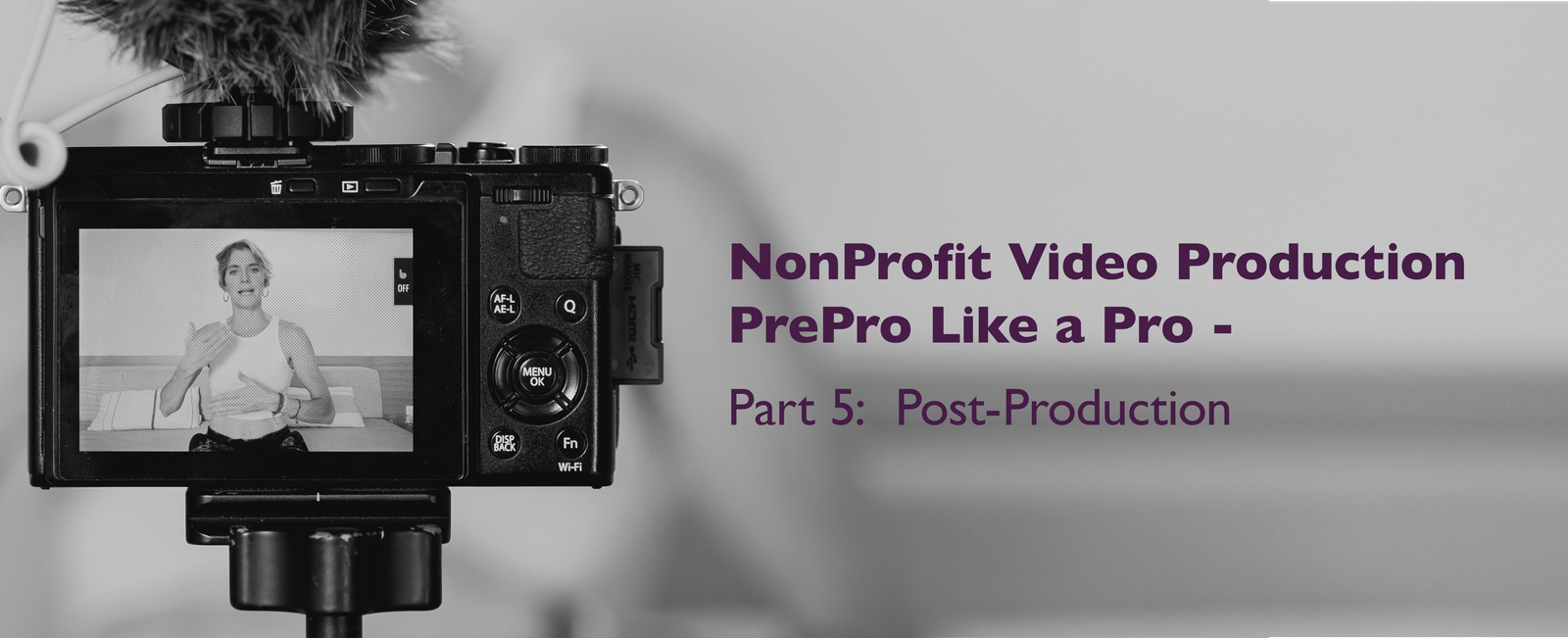You have made it! Your video is ‘in the can’ as we like to say in the biz. And now for post-production.

Another tidbit of anecdotal wisdom is that a story is told three times, once in the writing, once in the shooting, and then again in the editing room’.
The Assembly
Once the production is done, there will likely be a few days of downtime for your producer/director to either send the footage to the editor for ingestion and logging or for them to change gears and do it themselves. Again, everyone works differently, but I like to send my clients a link to an assembly. An assembly is not an edit, it is simply a collection of the footage that was shot. I group mine into interviews, b-roll, and/or scenarios. The footage will not be colour corrected, and it won’t have a sound mix done, this can be disconcerting for clients but your producer should flag any real concerns for you.
Rough Cut
Now, I like to take some time to put a rough edit together. A rough edit still won’t be colour corrected or have polished sound, it may have placeholders for motion graphics, and any stock will likely have watermarks on it. The rough edit is where client feedback is most important. Polishing an edit can take a while and once the music is added and the sound/picture marry, making major changes can be time-consuming (and cost money). You will likely stay at the rough edit place longer than you think as you check all your points are covered, and graphics, stock and music are doing what you want them to do. You may show this edit to others to get their opinions.
In the rough edit, you will want to watch it to ensure that all the points you identified in your ‘purpose list’ are covered and the concerns you identified on set are addressed. Make notes on scenes that don’t represent your organization or its people accurately; and provide feedback on music, use of stock footage, pacing, and the story. A lot of back and forth here is normal.
The Fine Cut
After the rough edit, we move to a fine cut. The fine cut means you are getting close to completion. The stock should be finalized and purchased, the motion graphics are in, colour correction is done, and the sound and music are final. There may be some small adjustments in the edit for pacing but this is the cut that is sent for approvals.
This can also be when it falls apart, and changes must be made. Depending on your production agreement, you may need to pay for additional editing time but most editors will include a round or two of reasonable adjustments.
Once everyone who needs to has signed off, you have the final cut. Your editor or post-production house will export the file formats agreed upon in pre-production. You will want to supply a hard drive to the editor to transfer all the media and footage for your archive in case you want or need to hire someone else for different edits or to use the footage in other productions.
Now you can send out invitations to the premiere. This is a good opportunity for a live virtual screening even if an in-person screening isn’t possible. It is also a good idea to check on your views and confirm that your plan for reaching your audience is working.
Feel free to email if you have any questions or comments on this series.



No responses yet